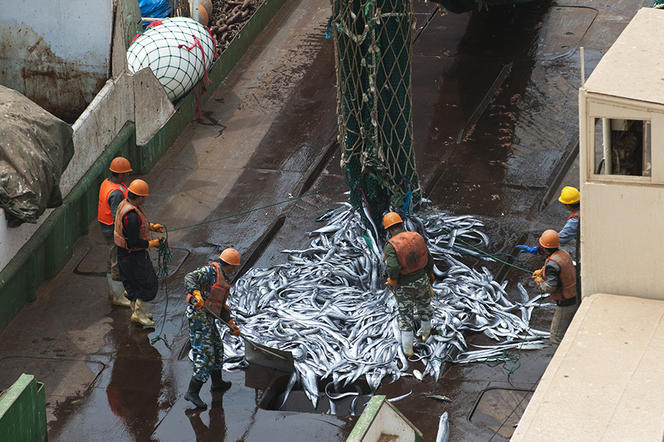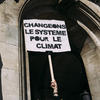You are here
Is the concept of GDP compatible with the ecological transition?

It is difficult to imagine our modern-day economies without their vital barometer: the Gross Domestic Product (GDP) and its much-touted growth, carefully monitored year after year by every government on the face of the globe. However, more and more questions are being raised about the relevance of this indicator in relation to the challenges of the environmental transition: is the concept of GDP, which accompanied the post-war boom and rapid growth based essentially on energy from fossil fuels, useful in the struggle against greenhouse gas emissions and the depletion of biodiversity? Should it be improved, supplemented, or even replaced by more pertinent standards?
“GDP is not an intangible emblem,” says Florence Jany-Catrice, an economist at the CLERSÉ,1 who adds that the concept is relatively recent. “Its origin is attributed to the American economist Simon Kuznets, who in the early 1930s developed a prototype of GDP called ‘National Income’,” she recounts. “Kuznets was responding to a request from the American government, which had failed to anticipate the 1929 financial crisis and wanted an index to measure the country’s economic health.” He proposed an aggregate indicator that totalled all agricultural and industrial income, excluding portions of the service industry that were deemed non-productive.
GDP as it is known today actually emerged only after World War II, with the introduction of national account systems. “GDP was conceived to support public reconstruction policies based on industry and commerce,” Jany-Catrice explains. “The strong growth figures recorded in France during Les Trente Glorieuses are closely linked to this context.” The concept has evolved considerably over the years, for example with the inclusion in 1977 of services provided by public administrations, such as healthcare and education, which were previously excluded from the calculations due to their non-commercial nature.
“It wasn’t until the 1980s and 90s that GDP, originally an indicator of means, became an objective unto itself,” the economist notes. “Today a government’s primary goal is to boost its GDP – it has become a societal project.” But is this mindset compatible with a society striving to reduce its consumption of carbon and natural resources?
Is a “green GDP” realistic?
In the case of carbon emissions, “Their link with GDP was codified in 1993 by the Japanese economist Yoichi Kaya in the ‘Kaya identity’,” says Patrick Criqui, an economist at the Grenoble Applied Economics Lab (GAEL).2 Kaya’s equation breaks down CO2 emissions as the product of several ratios, pointing the way towards potential levers for action. The breakdown works as follows: a country’s CO2 emissions are the product of the CO2 intensity of its energy sources, the amount of energy used per unit of GDP, the GDP per capita and the total population. Or, CO2 = population x (GDP/population) x (energy/GDP) x (CO2/energy)
“In France, the quantity of energy used per unit of GDP (energy/GDP) has already dropped considerably over the past 50 years, but it remains a key lever for reducing emissions. This entails more energy-efficient equipment and greater energy sobriety in our everyday lives,” the economist observes. “As for the CO2 intensity of the energy sources (CO2/energy), the only way to reduce it is through the widespread adoption of carbon-free energy.” While Criqui is well aware of the limits of GDP, “which does not take negative effects on the environment into account,” he is in favour of retaining this “economic barometer”, however imperfect it may be, provided that it be combined with other social and environmental indicators.
As Jany-Catrice emphasises, “GDP is an indicator related to a specific economic situation: the post-World War II reconstruction period. It is also closely linked to fossil fuels. The ideal of ‘infinite growth’ that it conveys does not correspond to the sustainability goals that we must now pursue.”
For good reason: GDP quantifies flows – specifically, the income generated by a country’s economic activities in a given year – and not supplies. Yet the limits of our planet are expressed in terms of supplies and reserves: forested surfaces, the size of insect or bird populations, the amount of fish in the ocean, of mineral resources… “All of these supplies are what enabled the frenzied economic growth of the industrial revolution and the post-war period,” Jany-Catrice notes. “Today we have very few reserve indicators, while intensive production systems irreversibly deplete our ecological heritage.”
Of the nine planetary boundaries defined in 2009 by an international team of 26 researchers (erosion of biodiversity, ocean acidification, chemical pollution, fresh water, etc.), six have already been exceeded. “What will happen when there are no more insects to pollinate the flowers?” asks Jany-Catrice, who is sceptical about a “Green GDP” that would reconcile economic growth and the finite nature of the planet’s resources. “Formulated in the late 1980s, the ‘Green GDP’ concept supports the idea that economic growth can provide means of inventing the technological tools that will help solve the ecological problem. It is based on an unquestioning belief in what economists call ‘technical progress’, which needs to be challenged.”
The stalemate of total monetisation
The choice of indicators to replace GDP is now a hotly debated subject. On an international scale, the United Nations Environment Programme (UNEP) has developed the Inclusive Wealth Index (IWI) as a way to calculate human, ecological and economic capital. The problem, according to Jany-Catrice, is that like GDP, the IWI is a strictly monetary indicator. “To use the language of monetisation for things that don’t have a price, like air or water quality, is to accept the notion that there is always a way to fix the damage,” the economist warns. “Monetisation does not allow for the non-substitutability of such factors, nor for irreversibilities.”
Total monetarisation can even lead to anomalous results. For example, the economist William Nordhaus, winner of the 2018 Bank of Sweden Prize (the Nobel Prize in Economic Sciences), has asserted that the optimal level of global warming, in other words the temperature increase at which the costs and benefits related to climate change would balance out, was 4°C…
However well-intentioned, the 17 Global Goals for sustainable development drafted by the UN, with their 232 indicators, seem impossible to adopt as a barometer for the leaders of any country. “To run a national government you need a clear, concise dashboard,” Criqui observes. “Already in 2009, this was corroborated by the recommendations of the Sen-Stiglitz-Fitoussi Report3 on the measurement of economic performance and social progress, commissioned by President Nicolas Sarkozy.”
Other possibilities are under study. For Jany-Catrice and Criqui, the available carbon supply is one viable potential indicator on both the national and international scale. As Criqui mentions, “We’ve already had a national low-carbon strategy in France for many years. The roadmaps are there – the main problem is how to reconcile them with reality… In this regard, there is always a gap between the government’s narrative and the changes actually carried out. Meanwhile, our socio-technical systems need to be decarbonised across the board.”
Growth in question
“At the regional level in France, my team and I have developed social and ecological health indicators based on a number of factors,” recounts Jany-Catrice, who has devoted her efforts to researching new wealth indices for the past 20 years. “I include land use, biodiversity measured for example via the national ZNIEFF inventory of ecologically important natural zones, from a floristic and faunistic point of view…” At the same time, the researcher acknowledges that much remains to be inventoried in order to understand our natural heritage as a whole. “We can quantify carbon, but when it comes to qualitative assessments, as with biodiversity, things become more complex,” she says.
“The climate and ecological transition are major, extremely difficult issues that will require a drastic, far-reaching transformation of our entire socio-technical system,” Criqui warns. “We must achieve a complete overhaul in less than 30 years, something that has never been done before. It will be extraordinarily tricky.”
Faced with this issue, GDP growth can no longer be the sole objective, Criqui maintains, pointing out that economists have long abandoned the idea of strong infinite expansion. “All the international projections incorporate the idea of a slowdown in GDP, because demographic evolution is slackening in emerging countries, because productivity is no longer increasing as fast, because the Chinese economy has nearly finished catching up…”
“We are starting to see macroeconomic research that reflects the concept of stagnation ,” observes Jany-Catrice, who recalls: “Zero growth does not mean that we’re no longer producing anything – it only means that we’re not producing more than the year before.
- 1. Centre Lillois d’Études et de Recherches Sociologiques et Économiques (CNRS / Université de Lille).
- 2. Laboratoire d’Économie Appliquée de Grenoble (CNRS / INRAE / Université Grenoble-Alpes).
- 3. Named after the Nobel economics laureates Amartya Sen and Joseph Stiglitz plus Jean-Paul Fitoussi, then director of the Office Français de la Conjoncture Économique.


















